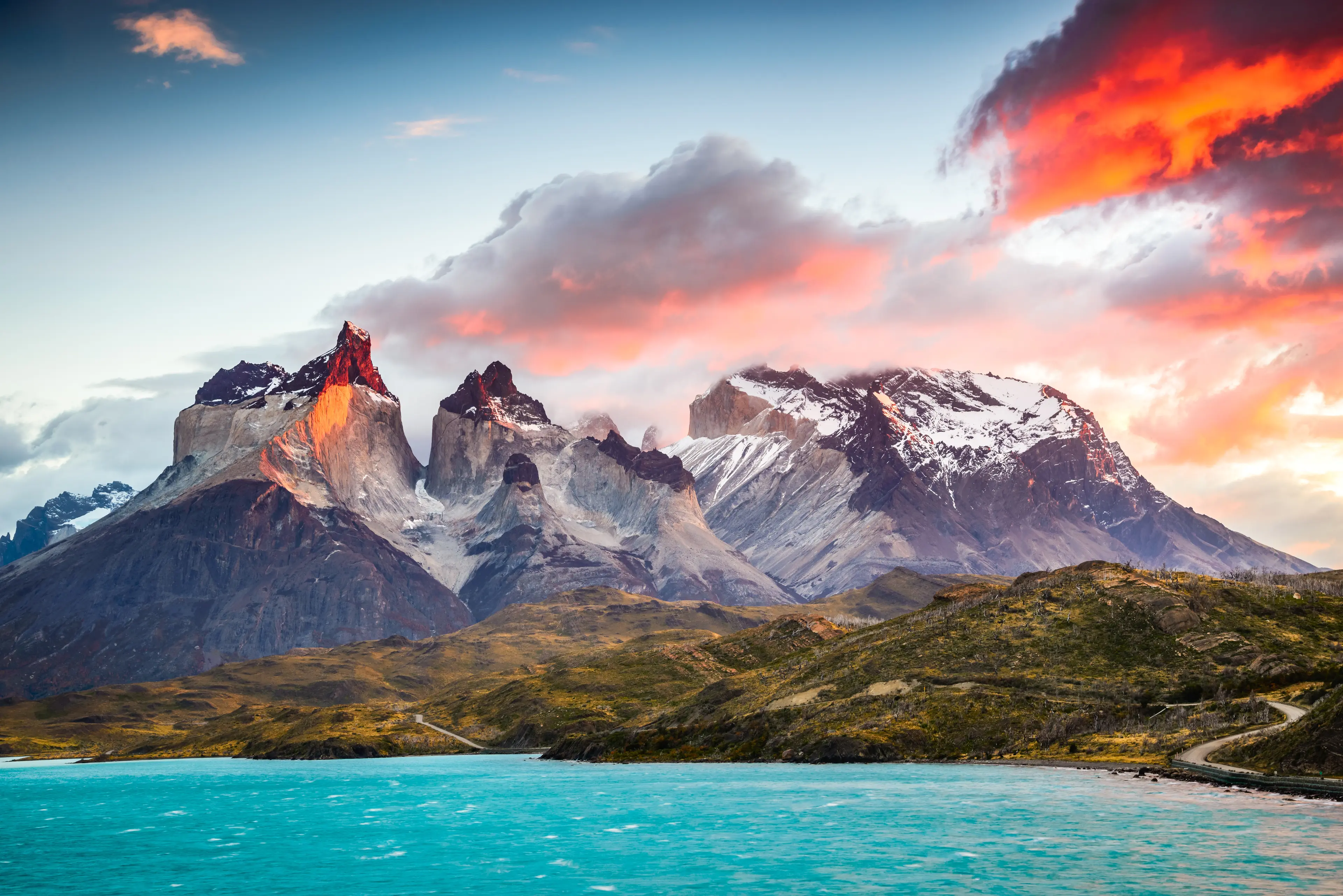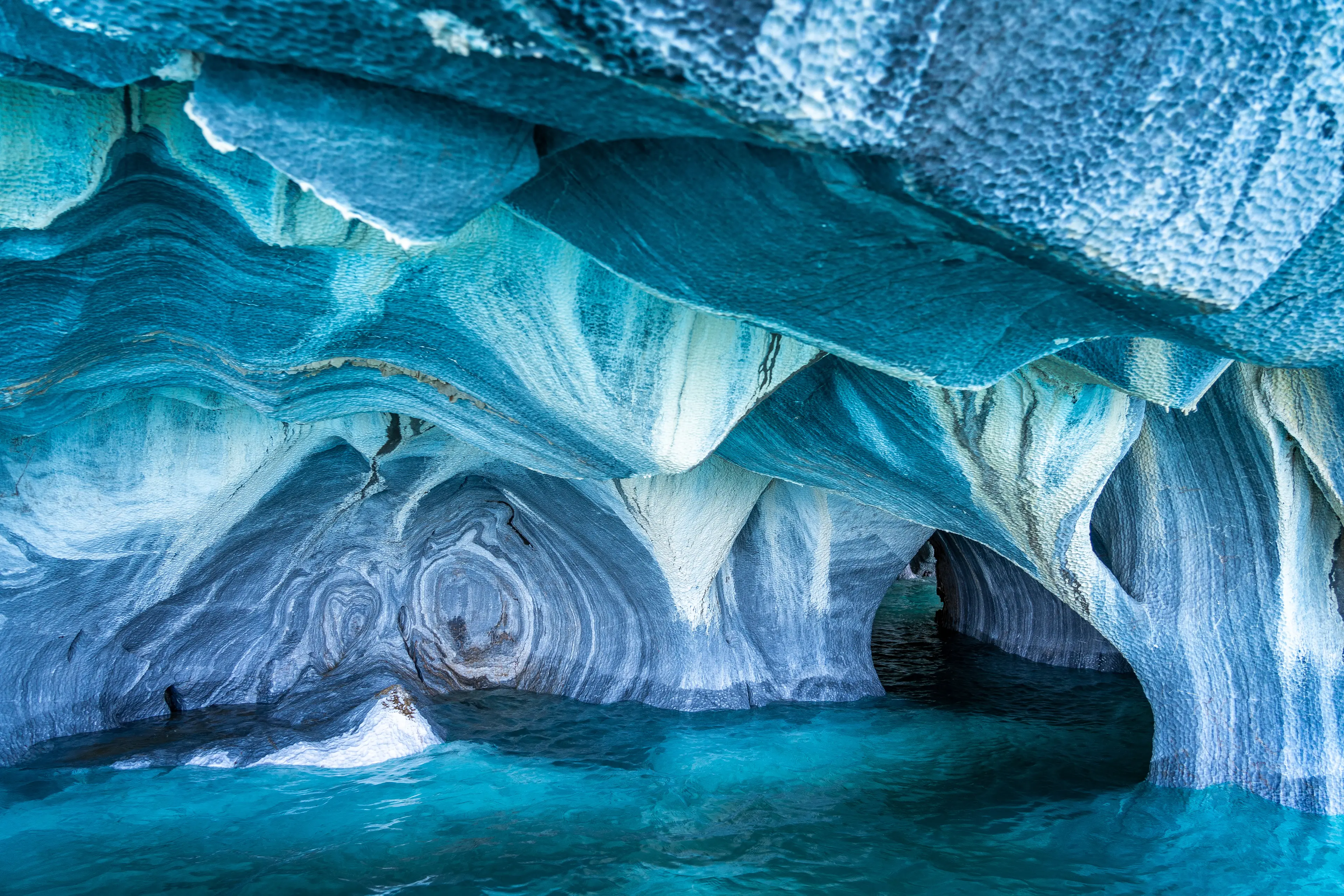5-Day Relaxing Sightseeing Adventure for Couples in Chilean Patagonia
Chilean Patagonia, Chile
5 days
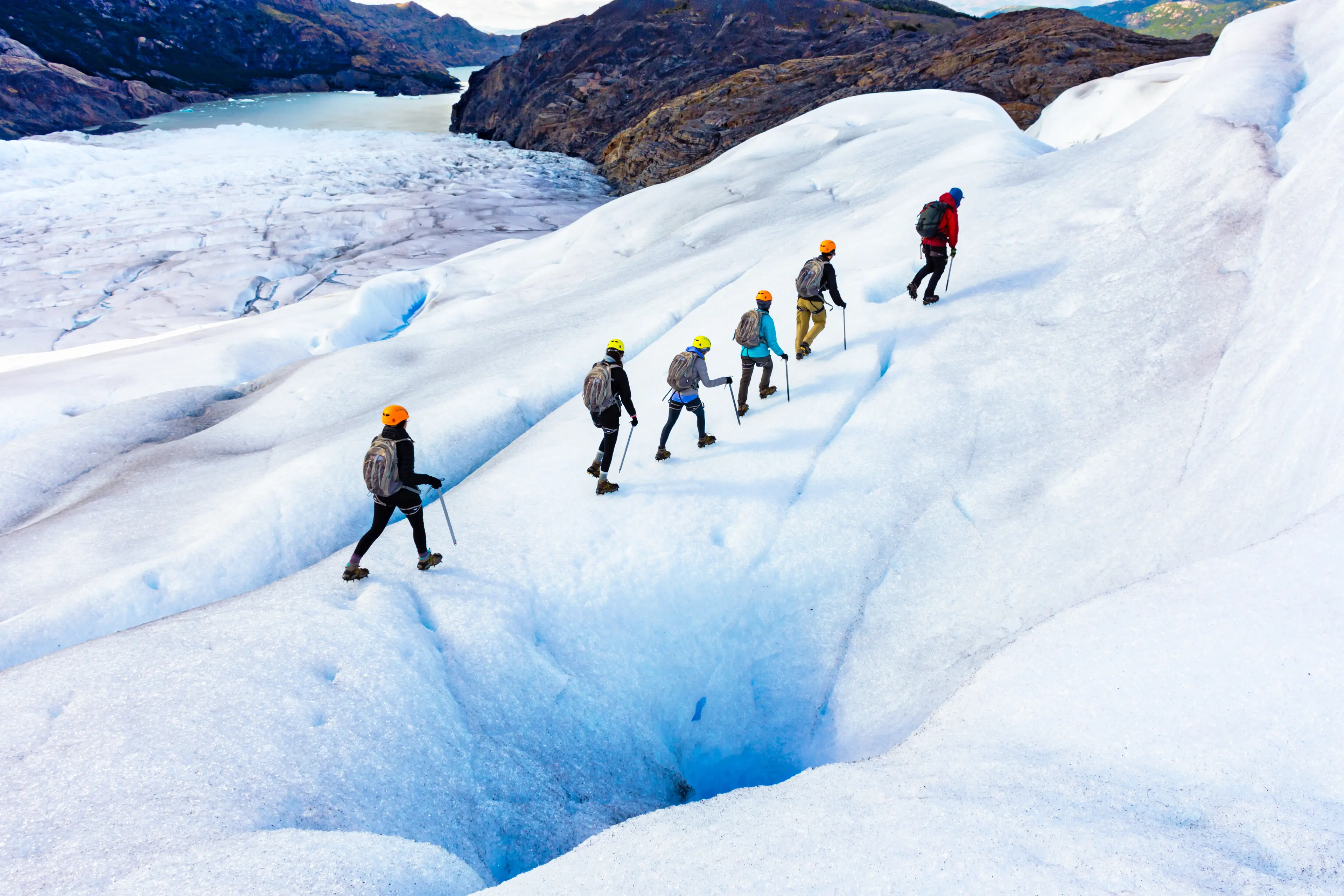
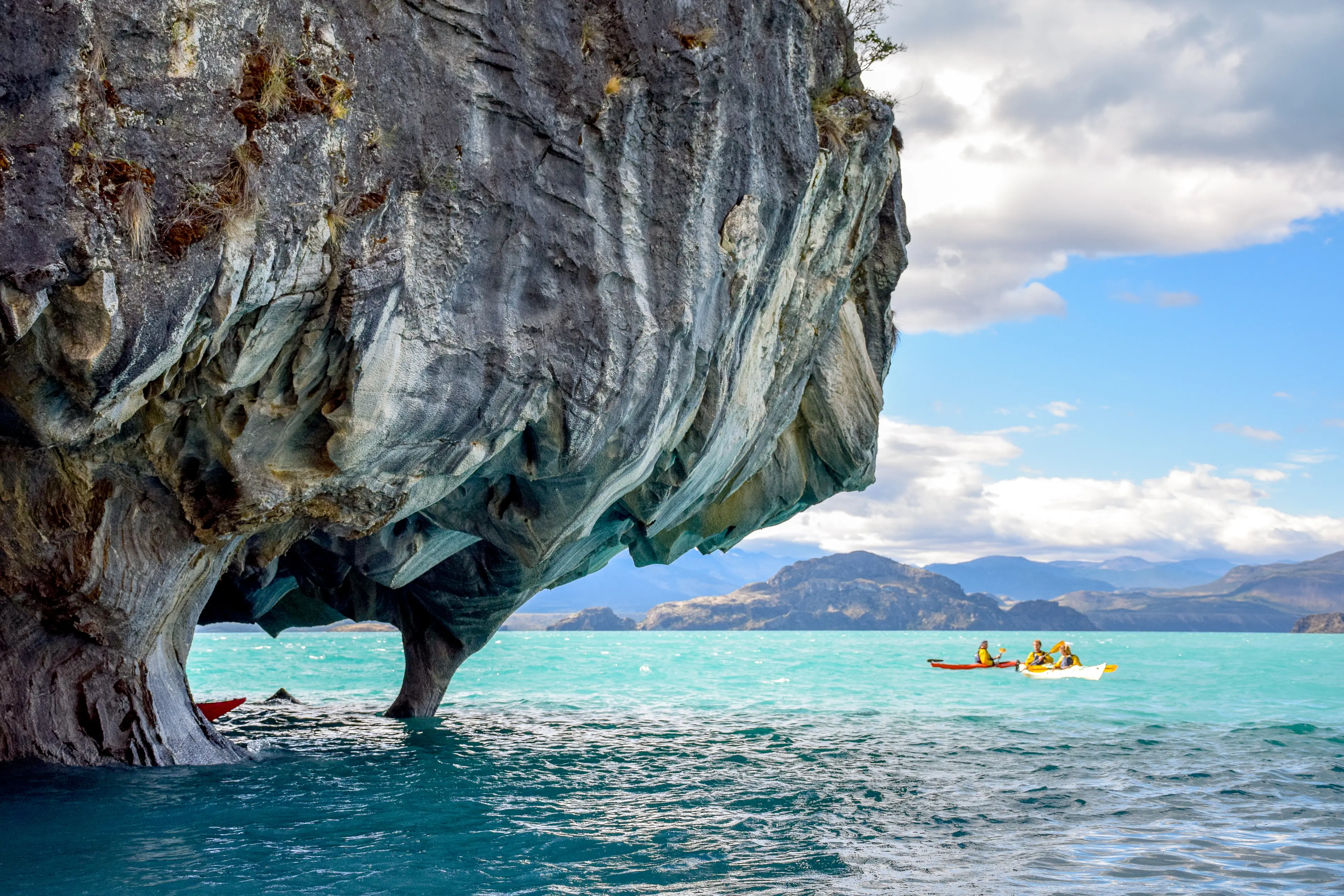


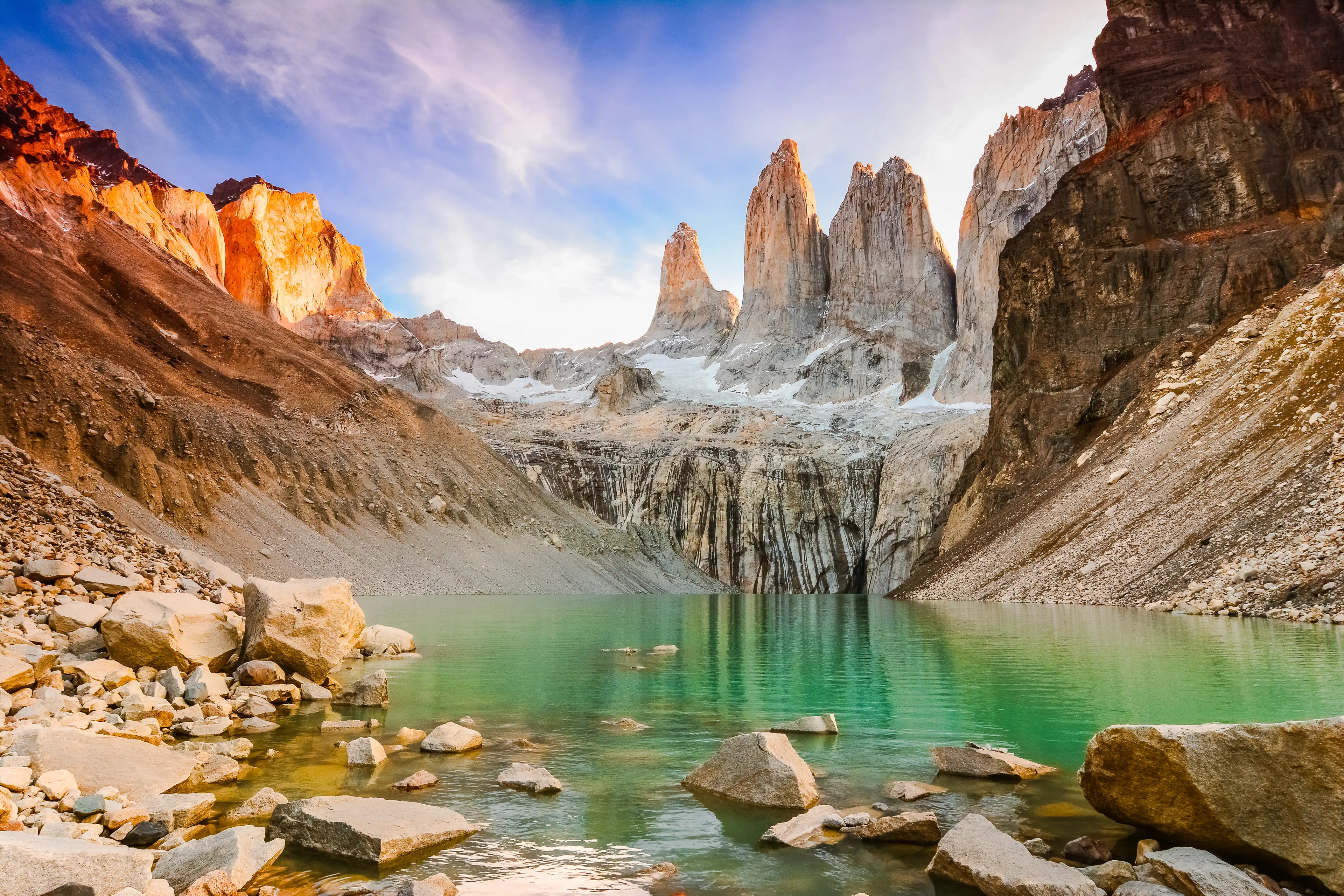
About Chilean Patagonia, Chile
Experience the unspoiled beauty of Chilean Patagonia, a paradise for nature lovers and adventure seekers. This southernmost region of Chile is home to breathtaking landscapes, from the towering peaks of the Andes and the expansive Southern Ice Fields, to the stunning fjords and wildlife-rich forests. Explore the world-renowned Torres del Paine National Park, a UNESCO Biosphere Reserve, where you can hike, horseback ride, or kayak amidst its majestic scenery. Visit the charming town of Punta Arenas, the gateway to Antarctica, and discover its rich history and culture. Enjoy the local cuisine, featuring fresh seafood and world-class Chilean wines. Whether you're seeking tranquility or thrill, Chilean Patagonia offers an unforgettable journey.
5-Day Itinerary
Day 2
Boat Tour to Magdalena Island
Morning
Embark on a boat tour to Magdalena Island, home to a large colony of Magellanic penguins.
Lunch
Enjoy a packed lunch on the boat while you take in the stunning views of the Patagonian landscape.
Afternoon
Continue your exploration of Magdalena Island, taking time to watch the penguins and other wildlife.
Dinner
Return to Punta Arenas for a cozy dinner featuring local Chilean wines and dishes.
Evening
Relax in your hotel, perhaps enjoying a nightcap while reflecting on the day's adventures.
Day 3
Adventure in Torres del Paine National Park
Morning
Travel to Torres del Paine National Park, a UNESCO Biosphere Reserve known for its stunning natural beauty.
Lunch
Enjoy a picnic lunch amidst the breathtaking scenery of the park.
Afternoon
Take a guided hike to the base of the Paine Towers, the park's most iconic landmark.
Dinner
Dine under the stars at your campsite, enjoying a traditional Chilean barbecue.
Evening
Relax by the campfire, stargazing and listening to the sounds of nature.
Day 4
More Exploration in Torres del Paine and Return to Punta Arenas
Morning
Explore more of Torres del Paine National Park, perhaps taking a boat tour to see the Grey Glacier.
Lunch
Have lunch at a scenic spot overlooking the glacier and the surrounding mountains.
Afternoon
Return to Punta Arenas, taking in the beautiful Patagonian landscape along the way.
Dinner
Enjoy a relaxing dinner in Punta Arenas, perhaps trying a new Chilean dish.
Evening
Take a leisurely stroll around the town, enjoying the evening atmosphere.
Day 5
Last Day in Punta Arenas
Morning
Spend your last day shopping for souvenirs and exploring any parts of Punta Arenas you haven't seen yet.
Lunch
Have a leisurely lunch at a local café, savoring the flavors of Chilean cuisine.
Afternoon
Visit the Cemetery of Punta Arenas, known for its beautiful mausoleums and European cypress trees.
Dinner
Enjoy a farewell dinner, celebrating the end of your memorable trip to Chilean Patagonia.
Evening
Relax in your hotel, packing and preparing for your journey home.
Attractions in Itinerary (6)

1Nao Victoria Museum
The Nao Victoria Museum is a maritime museum that showcases replicas of historical ships, including the Nao Victoria, the ship Ferdinand Magellan used to circumnavigate the globe. It offers a unique insight into the region's maritime history.

2Magdalena Island
Magdalena Island is a small island in the Strait of Magellan that's home to one of the largest penguin colonies in southern Chile. Visitors can take a boat tour to the island and walk among the penguins on a marked trail.

3Torres del Paine National Park
A national park encompassing mountains, glaciers, lakes, and rivers in southern Chilean Patagonia.

4Paine Towers
The Paine Towers are a famous natural landmark in Chilean Patagonia. They are a set of mountain peaks in Torres del Paine National Park. The towers themselves are remnants of a great cirque eroded by glaciation.

5Grey Glacier
A massive glacier located in the Torres del Paine National Park, accessible by boat tours.

6Cemetery of Punta Arenas
The Cemetery of Punta Arenas is a public cemetery located in the city of Punta Arenas, Chile. It has been declared a National Monument due to its historical and architectural value. The cemetery is known for its elaborate mausoleums and the European cypress trees that line its main walkway.
Local Food and Drinks (12)

Cordero al Palo
This is a traditional Patagonian dish where a whole lamb is cooked over an open fire. The lamb is seasoned with local herbs and spices, and slow-cooked for several hours, resulting in tender, flavorful meat that is a must-try for any meat lover visiting Chilean Patagonia.

Curanto
Curanto is a traditional Chilean dish made by cooking seafood, meat, potatoes, and vegetables in a hole in the ground. The food is covered with leaves and left to steam for several hours. This method of cooking gives the food a unique, smoky flavor that is characteristic of Patagonian cuisine.

Chupe de Centolla
This is a rich and creamy king crab stew that is a specialty of the region. The stew is made with fresh king crab, cream, cheese, onions, and spices, and is typically served with fresh bread.

Empanadas de Pino
Empanadas de Pino are a type of empanada filled with a mixture of ground beef, onions, raisins, black olives, and hard-boiled eggs. These savory pastries are a popular snack or appetizer in Chilean Patagonia.
Calafate Sour
This is a local variation of the famous Pisco Sour cocktail, made with calafate berries instead of lime. The calafate berry is native to Patagonia and gives the drink a unique, sweet-tart flavor.
Cazuela de Llama
This is a hearty stew made with llama meat, potatoes, corn, and vegetables. Llama meat is lean and flavorful, and is a common ingredient in Patagonian cuisine.

Milcao
Milcao is a traditional potato pancake that is often served as a side dish with meals. The pancakes are made with grated and mashed potatoes, and are typically fried until crispy.

Choripan
Choripan is a popular street food in Chilean Patagonia. It consists of a grilled chorizo sausage served in a bread roll, often with chimichurri sauce.

Pastel de Choclo
This is a traditional Chilean dish made with a mixture of ground corn, meat, and vegetables. The mixture is baked until golden brown, resulting in a savory pie that is a staple of Patagonian cuisine.

Mate
Mate is a traditional South American drink made by steeping dried yerba mate leaves in hot water. It is a social drink in Patagonia, often shared among friends and family.
Pan Amasado
Pan Amasado is a type of homemade bread that is a staple in Chilean households. It is often served with meals, or used to make sandwiches.

Pisco Sour
Pisco Sour is a famous cocktail in Chile made with Pisco, a type of brandy, lime juice, simple syrup, and egg whites. It's a refreshing drink that is popular throughout the country, including in Patagonia.
Best time to visit
The best time to visit Chilean Patagonia is during the Southern Hemisphere's summer, from December to March. During these months, the weather is warmer and the days are longer, allowing more time for exploring the stunning landscapes. This is also the peak tourist season, so you can expect more crowd. If you prefer a quieter time, consider visiting during the shoulder seasons of spring (September to November) and fall (March to May). These periods offer milder weather and fewer tourists. However, keep in mind that some attractions and accommodations may be closed during the off-peak winter months from June to August.
How to get around
Air Travel
Chilean Patagonia is a vast region, and the quickest way to cover long distances is by air. The main airports are Punta Arenas, Puerto Natales, and Balmaceda, which are well connected with Santiago, the capital of Chile. From these airports, you can hire a car or take a bus to reach your specific destination.
Car Rental
Renting a car gives you the freedom to explore Chilean Patagonia at your own pace. The roads are generally well-maintained, especially the Carretera Austral, which is a scenic route that runs through the region. However, be prepared for gravel roads in some areas. Remember to always carry a spare tire and fuel, as gas stations can be sparse in remote areas.
Bus Travel
Buses are a common and affordable way to travel around Chilean Patagonia. They connect major towns and cities, and even some remote areas. The service is reliable, but the frequency can be less in off-peak seasons or remote areas. It's advisable to book your tickets in advance, especially during the high season.
Boat/Ferry
Boating is a popular way to explore the fjords, glaciers, and islands of Chilean Patagonia. There are regular ferry services between Puerto Montt and Puerto Natales, and also to the more remote areas like the Chiloe Islands. Some routes offer the opportunity to see wildlife such as dolphins, seals, and penguins.
Hiking
Chilean Patagonia is a hiker's paradise, with numerous trails that offer stunning views of mountains, glaciers, forests, and lakes. Popular hiking destinations include Torres del Paine National Park, Los Glaciares National Park, and Tierra del Fuego. Always check the weather conditions and pack appropriate gear before setting out.
Bicycle
Cycling is a great way to explore Chilean Patagonia, especially the Carretera Austral. The route is challenging with its hilly terrain and changing weather conditions, but it offers breathtaking views. Bike rentals are available in major towns, and it's advisable to carry repair kits.
Ridesharing
Ridesharing is not very common in Chilean Patagonia due to its remote nature. However, in larger towns and cities like Punta Arenas or Puerto Natales, you may find services like Uber or local equivalents. It's always a good idea to check the availability and regulations of ridesharing services in advance.
Important information
Currency$ CLP
Time zoneUTC-3
Driving sideRight
Emergency phoneAmbulance: 131; Fire: 132; Police 132
Drinking waterOpt for bottled water
Power sockets
Voltage220 V
Things to know about Chilean Patagonia, Chile as a first time visitor
1
Chilean Patagonia is located in the southernmost part of South America, spanning both Chile and Argentina.
2
The region is known for its unpredictable weather. It can change dramatically within a day, so pack layers and be prepared for all conditions.
3
The best time to visit Chilean Patagonia is during the summer months (December to March) when temperatures range from 40°F to 70°F (4°C to 21°C).
4
The region is sparsely populated, so don't expect many urban amenities. It's all about nature and outdoor activities here.
5
Spanish is the official language in Chile. English is not widely spoken outside of major tourist areas, so it's beneficial to learn some basic Spanish phrases.
6
The currency in Chile is the Chilean Peso (CLP). Credit cards are widely accepted in larger towns and cities, but it's a good idea to carry some cash for smaller establishments.
7
Chilean Patagonia is a safe region for tourists, but as with any travel, it's important to take basic precautions to protect your belongings.
8
The region is vast and distances between attractions can be large. Consider renting a car or joining a tour to make the most of your visit.
9
Chilean cuisine is a mix of indigenous and European influences. Be sure to try local specialties like empanadas, cazuela, and seafood.
10
Chile is known for its excellent wines, especially its reds. Don't miss the chance to try a glass of Carmenere or Cabernet Sauvignon.
11
Chilean Patagonia is home to a variety of wildlife, including penguins, sea lions, and guanacos. Respect the wildlife and keep a safe distance.
12
The region operates on Chile Standard Time (CLT), which is 4 hours behind Coordinated Universal Time (UTC-4).
13
Chile uses the type C and L plug. The standard voltage is 220 V, and the standard frequency is 50 Hz.
14
Chilean Patagonia is a paradise for outdoor enthusiasts, offering activities like hiking, kayaking, and horseback riding.
15
Chile has a reciprocal fee for citizens of certain countries, including Australia and Mexico. Check if this applies to you before you travel.
16
Tap water is generally safe to drink in Chile, but it's always a good idea to ask or buy bottled water just to be safe.
17
Chilean Patagonia is a remote region, so it's important to have a good travel insurance policy that covers medical emergencies.
18
Internet access can be limited in remote areas of Patagonia. If staying connected is important to you, consider purchasing a local SIM card.
19
Chileans are known for their warm hospitality. Don't be surprised if you're invited into a local's home for a meal.
20
Chilean Patagonia is a destination that requires a good level of physical fitness due to the amount of outdoor activities. Make sure you're in good health before you go.
Basic Spanish to know as a first time visitor
English phrase | Native phrase | Pronunciation | When to use it |
|---|---|---|---|
Hello | Hola | O-la | Greeting someone |
Goodbye | Adiós | A-dee-os | Leaving someone |
Please | Por favor | Por fa-vor | Making a request |
Thank you | Gracias | Gra-see-as | Expressing gratitude |
Yes | Sí | See | Agreeing with someone |
No | No | No | Disagreeing with someone |
Excuse me | Perdón | Per-don | Getting someone's attention |
I'm sorry | Lo siento | Lo see-en-to | Apologizing |
Do you speak English? | ¿Hablas inglés? | Ab-las in-gles | Asking if someone speaks English |
I don't understand | No entiendo | No en-tee-en-do | When you don't understand what is being said |
Where is the bathroom? | ¿Dónde está el baño? | Don-de es-ta el ban-yo | Asking for the location of the bathroom |
How much does it cost? | ¿Cuánto cuesta? | Kwan-to kues-ta | Asking the price of something |
I would like... | Me gustaría... | Me gus-ta-ree-a | Expressing a desire for something |
Help! | ¡Ayuda! | A-yu-da | In case of an emergency |
Can I have the menu, please? | ¿Puedo tener el menú, por favor? | Pwe-do te-ner el me-nu, por fa-vor | Asking for the menu in a restaurant |
Water | Agua | A-gwa | Asking for water |
Beer | Cerveza | Ser-ve-za | Ordering a beer |
Wine | Vino | Vee-no | Ordering wine |
Check, please | La cuenta, por favor | La kwen-ta, por fa-vor | Asking for the bill in a restaurant |
Where is...? | ¿Dónde está...? | Don-de es-ta | Asking for the location of something |
Packing List
Clothing
Thermal underwear
Warm socks
Waterproof hiking boots
Insulated jacket
Waterproof pants
Gloves
Beanie
Scarf
Sunglasses
Swimsuit
Casual clothes for city exploring
Toiletries
Travel-sized shampoo and conditioner
Travel-sized body wash
Toothbrush and toothpaste
Deodorant
Razor and shaving cream
Sunscreen
Lip balm
First aid kit
Prescription medications
Hand sanitizer
Travel documents and essentials
Passport
Driver's license
Credit and debit cards
Cash in local currency
Travel insurance documents
Hotel and tour confirmations
Emergency contact information
Electronics and gadgets
Smartphone
Charger for smartphone
Power bank
Digital camera
Charger for digital camera
Memory cards for digital camera
Travel adapter
Headphones
Miscellaneous items
Travel pillow
Earplugs
Sleep mask
Snacks
Water bottle
Books or e-books for leisure reading
Travel guide for Chilean Patagonia
Maps of the area
Backpack for day trips
Binoculars for wildlife viewing
Weather Conditions
Visiting Chilean Patagonia can be an exhilarating experience, but it's crucial to be prepared for its unpredictable weather. The region is known for its rapidly changing conditions, where you can experience all four seasons in a single day. The summer months, from December to February, are the warmest and most popular for tourists. During this period, temperatures can range from 40°F to 70°F (4°C to 21°C). However, sudden wind gusts can make it feel much colder, so it's essential to pack layers. The winter months, from June to August, are the coldest, with temperatures dropping as low as 28°F (-2°C) and rarely rising above 48°F (9°C). Snowfall is common during this period, especially in the mountains, making it a great time for winter sports enthusiasts. Regardless of when you visit, waterproof clothing is a must due to the region's high rainfall. It's also advisable to pack a hat, gloves, and sturdy footwear to protect against the wind and cold. Keep in mind that the weather can change quickly, so always check the local forecast before heading out for the day. And remember, the weather in Patagonia is part of the adventure, so embrace the elements and enjoy the stunning landscapes that this unique region has to offer.
| Month | Hi / Lo (°C) | Weather Overview |
|---|---|---|
January | 24° / 7° | January is the warmest month in Chilean Patagonia, with long daylight hours, making it a popular time for tourists. |
February | 23° / 7° | February is still warm, with slightly shorter days than January, but it's still a great time for outdoor activities. |
March | 20° / 5° | March sees the start of autumn, with cooler temperatures and fewer crowds, making it a good time for those seeking tranquility. |
April | 15° / 3° | April is a transition month, with the weather becoming colder and more unpredictable, but the autumn colors are stunning. |
May | 10° / 0° | May is the start of winter, with cold temperatures and snowfall, making it a good time for winter sports enthusiasts. |
June | 8° / -2° | June is the coldest month, with heavy snowfall, making it perfect for skiing and other winter activities. |
July | 8° / -2° | July is still very cold, with snow-covered landscapes, offering a unique beauty to the region. |
August | 9° / -1° | August sees the end of winter, with temperatures starting to rise slightly, but snow can still be expected. |
September | 12° / 0° | September is the start of spring, with temperatures slowly rising and the snow starting to melt. |
October | 16° / 2° | October offers mild temperatures and blooming flowers, making it a great time for hiking and wildlife spotting. |
November | 20° / 4° | November sees the start of summer, with longer days and warmer temperatures, making it a good time for outdoor activities. |
December | 22° / 6° | December is a popular month for tourism, with warm temperatures and long daylight hours, perfect for exploring the stunning landscapes. |
Did you know?
Places near by Chilean Patagonia, Chile

El Calafate
A charming town known for its proximity to the stunning Perito Moreno Glacier.

Ushuaia
The southernmost city in the world, offering beautiful landscapes and wildlife.

Puerto Natales
Gateway to the famous Torres del Paine National Park.

Punta Arenas
A bustling city with a rich history and stunning views of the Strait of Magellan.

Bariloche
A city known for its Swiss alpine-style architecture and its chocolate, nestled in the Andes mountains.

Valdivia
A city known for its German heritage, beautiful river views, and craft beer.

Monte Fitz Roy
A mountain located near El Chaltén village, in the Southern Patagonian Ice Field.

Tierra del Fuego
An archipelago off the southernmost tip of the South American mainland.
